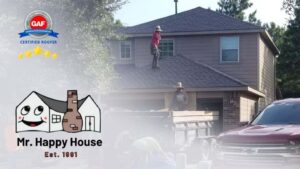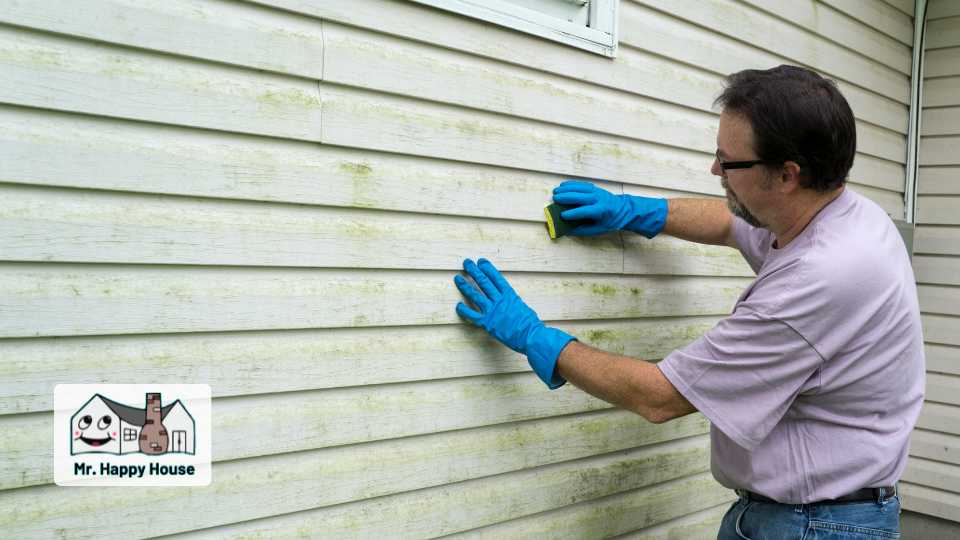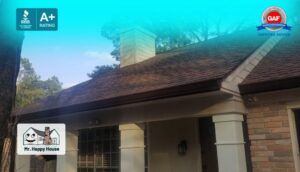
Best GAF Certified Roofers in The Woodlands, TX – Quality Roof Replacement, Gutters & Siding
Best GAF Certified Roofers in The Woodlands, TX – Quality Roof Replacement, Gutters & Siding Best GAF Certified Roofers in The Woodlands, TX – Quality

In the sweltering heat and relentless humidity homeowners in The Woodlands and Houston area face, unique challenges come when choosing the right siding. As a leading siding company in The Woodlands, we understand the pressing need for siding solutions that can withstand the demanding climate. In this article, we dive into why vinyl siding might not be the optimal choice for Houston residents.
From the specific considerations of our local climate to the performance of vinyl siding under extreme conditions, we aim to provide valuable insights for homeowners seeking durable and resilient siding options.
The Woodlands and the whole Houston area is no stranger to the sweltering heat and high humidity levels that define its climate. These environmental conditions exert a profound impact on the siding of homes throughout the area, warranting a closer examination of the challenges homeowners face in maintaining the integrity of their exteriors.
One of the foremost issues arising from Houston’s scorching temperatures is the propensity for siding materials to warp and fade over time. The relentless exposure to the sun’s rays can cause subtle yet cumulative changes in the composition of siding, leading to distortions in shape and a gradual loss of color vibrancy. Vinyl siding, in particular, is susceptible to these effects, compromising both its visual appeal and structural soundness.
Beyond the cosmetic concerns, the combined impact of heat and humidity can extend to the structural integrity of siding. Certain materials may absorb moisture, leading to swelling or warping that compromises their ability to provide a reliable barrier against the elements.
In a climate where sudden rain showers can follow scorching days, the ability of siding to withstand rapid changes in humidity becomes a critical factor in its overall performance.
As homeowners navigate the challenges posed by Houston’s climate, it becomes evident that the choice of siding material plays a pivotal role in the long-term resilience of their homes. In the subsequent sections, we will delve into specific siding options, assessing their suitability in addressing the unique demands imposed by the heat and humidity of the Houston area.
Vinyl siding, a popular choice for its cost-effectiveness and initial visual appeal, undergoes a rigorous examination when subjected to the unforgiving combination of intense heat and high humidity characteristic of regions like Houston.
In this section, we will closely examine how vinyl siding responds to the distinct challenges presented by these environmental conditions, shedding light on various aspects of its performance.
The scorching heat of Houston, coupled with elevated humidity levels, can significantly impact the durability of vinyl siding. While vinyl is lauded for its resistance to many environmental elements, prolonged exposure to extreme temperatures may lead to issues such as warping and distortion. The material’s ability to maintain its structural integrity over time becomes crucial, particularly when faced with the daily onslaught of the Texas sun.
One of the aesthetic advantages of vinyl siding is its vibrant and long-lasting color. However, the unrelenting sunlight in hot and humid climates can take a toll on this aspect. Fading becomes a common concern, diminishing the siding’s initial visual appeal. Homeowners in Houston may find themselves grappling with the gradual transformation of their vibrant vinyl siding into a paler, less vibrant version of its former self.
Vinyl siding’s composition, while resistant to many environmental factors, can make it susceptible to mold and mildew growth, especially in humid conditions. The combination of moisture in the air and occasional rain showers creates an environment conducive to these unwelcome intruders. Addressing mold and mildew not only becomes a recurrent maintenance task but also raises concerns about the long-term health of the siding material.
In hot climates, energy efficiency is a paramount consideration. Vinyl siding, however, may not offer the level of insulation required to combat the heat effectively. Its limited capacity to provide a thermal barrier can result in increased energy consumption as homeowners contend with the constant need for cooling in the face of rising temperatures.
As we dissect vinyl siding’s performance in hot and humid environments, it becomes apparent that while it may offer certain advantages, its susceptibility to heat-related issues and maintenance challenges warrants a careful evaluation by homeowners seeking a siding solution that can endure the demanding conditions of regions like Houston. In the subsequent sections, we will explore alternative siding options that may better address the specific demands imposed by the climate of hot and humid environments.
Houston’s distinctive climate, characterized by high humidity, temperature fluctuations, and occasional storms, presents homeowners with unique challenges when it comes to maintaining the exterior of their homes, particularly the siding. In this section, we will explore the specific maintenance issues that arise in the context of Houston’s environmental conditions, shedding light on the factors that contribute to the ongoing care and preservation requirements of various siding materials.
The elevated humidity levels in The Woodlands and the Houston area create an environment conducive to mold and mildew growth, posing a constant threat to the pristine appearance and structural integrity of siding. Homeowners may find themselves grappling with the recurring task of cleaning and treating siding to prevent the onset of these unwanted elements. Understanding how different siding materials respond to humidity is crucial in devising effective maintenance strategies.
Houston’s climate is characterized by temperature variations, with scorching summers and milder winters. These fluctuations can impact the performance of siding materials, especially those prone to expansion and contraction. Certain materials may be more resilient in the face of these temperature changes, while others might be susceptible to warping or cracking. Recognizing how siding responds to Houston’s temperature shifts is key to implementing proactive maintenance measures.
Occasional storms, including heavy rains and strong winds, are part of Houston’s weather landscape. Siding materials need to be resilient enough to withstand these weather events. Homeowners must consider the impact of storms on their siding, such as potential water damage or loosening of panels. Adequate maintenance involves inspecting and reinforcing siding after storms to ensure it continues to provide effective protection for the home.
The intense sunlight in Houston can contribute to color fading in siding materials over time. Regular exposure to the sun’s UV rays can gradually diminish the vibrancy of colors, affecting the overall aesthetic appeal of the home. Homeowners need to factor in this aspect when choosing siding materials and develop maintenance routines to address color fading, whether through cleaning, treatments, or periodic inspections.
In navigating the maintenance landscape specific to Houston, homeowners can make more informed decisions about siding materials that align with the demands of the local climate. The subsequent sections will further explore how various siding options fare in the face of these maintenance challenges, helping homeowners choose siding that not only withstands the elements but also simplifies the ongoing care and preservation process.
Each material comes with its own price tag, and factors such as the size of the home and the complexity of the installation process can influence these costs. Vinyl siding can cost just as much as James Hardie Siding for materials and installation, however, in the long term, vinyl siding will not hold up it’s value and can lessen the value of your home.
Each material comes with its own price tag, and factors such as the size of the home and the complexity of the installation process can influence these costs. Woodlands homeowners can gain insights into the initial financial investment required for popular siding choices, allowing them to align their preferences with their budget constraints.
In conclusion, vinyl siding is the worst siding option you can have for your Woodlands home, due to the fact that the extreme weather we all experience in the Houston area can deteriorate Vinyl Siding and cause warping, paint peeling, and many other problems over time.
The best siding option for homes in The Woodlands is James Hardie Siding, a fiber cement material, that never rots, will not warp like Vinyl Siding, and many other benefits listed here. If you’re looking for a Hardie Siding Installer in The Woodlands, contact Mr. Happy House today for a home estimate.
We hoped you loved this article on if can you replace siding with brick, please share and tune in for more roofing, siding, and house painting content!
Our Services:













Best GAF Certified Roofers in The Woodlands, TX – Quality Roof Replacement, Gutters & Siding
Best GAF Certified Roofers in The Woodlands, TX – Quality Roof Replacement, Gutters & Siding Best GAF Certified Roofers in The Woodlands, TX – Quality

Are Gutters Part of the Roofing System?
Are Gutters Part of the Roofing System? Are Gutters Part of the Roofing System? When it comes to home maintenance, gutters often seem like a

Why James Hardie is The Best Option for Home Siding
Why James Hardie is The Best Option for Home Siding Why James Hardie is The Best Option for Home Siding James Hardie stands out whether











